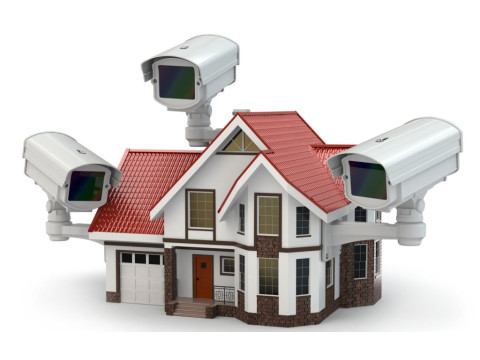Surveillance Kits for Private Homes: Features and Tips for Selection
Wireless Solutions
Ready-made surveillance kits are often chosen in the following scenarios:
- To save money on equipment.
- To simplify the installation process for home or vacation property surveillance systems.
Typically, purchasing a pre-assembled kit costs less than buying cameras and DVRs separately. However, ensure the kit's configuration and specifications meet your needs.
Home Surveillance Kits
For private homes, both outdoor and indoor cameras are often required. This requirement narrows down the number of suitable options. When choosing a kit, consider the following critical factors:
Focal Length of Camera Lenses
Most kits include cameras with a standard focal length of 3.6mm, offering a viewing distance of 10 to 20 meters. While this is versatile for general use, ensure it aligns with your specific surveillance needs.- Why Focal Length Matters:
It determines the camera’s viewing angle and detail resolution, crucial for effective monitoring.
- Why Focal Length Matters:
Camera Resolution
Analog kits with cameras offering 600-800 TVL resolution are typically sufficient for home use. However, ensure the DVR can record and display at least 960H resolution for better video quality.AHD Surveillance Systems
If opting for an analog system, consider an AHD (Analog High Definition) kit. These kits offer quality comparable to mid-range IP systems but at a lower price.
Wireless Surveillance Kits
Wireless kits are ideal for minimizing cable installation and maintaining interior aesthetics. They are also practical for outdoor setups, eliminating the need to run connection lines across your property.
Common Configurations:
Wireless kits often use IP cameras with Wi-Fi connectivity and come in two variants:- Cameras with a receiver (requires a PC for viewing and recording).
- Cameras with a DVR (includes built-in storage and recording capabilities).
Remote Access:
Many kits allow remote monitoring over the internet, supporting both wired and wireless connections. However, 3G internet may struggle with multiple cameras due to bandwidth limitations.
Choosing the Right Kit
For private homes or vacation properties, pre-assembled kits with 4 to 8 cameras are typically sufficient. However, consider these factors:
Location and Terrain:
- Analyze the configuration of the property, including its size and layout.
- Determine the best camera placements for optimal coverage.
Additional Components:
- Many kits do not include enough cables or connectors, leading to extra expenses.
- Wireless systems reduce the need for cabling but require strong Wi-Fi coverage.
IP Camera Kits:
For beginners, a ready-made IP kit with cameras and a DVR is often the best choice. It ensures compatibility and simplifies setup, minimizing potential issues.
By following these principles, you can select and install a surveillance system that meets your security needs effectively while staying within budget.

